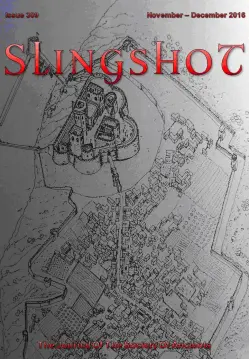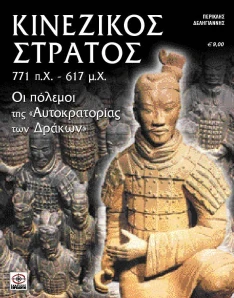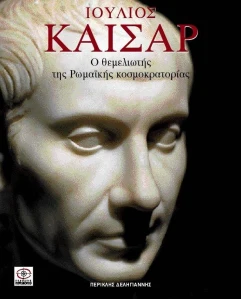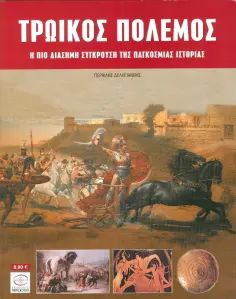11/05/2020
periklisdeligiannis.wordpress.com
Uncategorized
Ancient warfare, Bronze Age, European Bronze Age, Germany, Mecklenburg, Military, Military history, Tollense battle, University of Göttingen, Warfare
Republication from phys.org/
by University of Göttingen

These are the battlefield remains from the layer where objects were found at the site near the Tollense river in Weltzin. (Credit: Stefan Sauer)
.
Recent archaeological investigations in the Tollense Valley led by the University of Göttingen, the State Agency for Cultural Heritage in Mecklenburg-Vorpommern and the University of Greifswald have unearthed a collection of 31 unusual objects. Researchers believe this is the personal equipment of a Bronze Age warrior who died on the battlefield 3,300 years ago. This unique find was discovered by a diving team headed by Dr. Joachim Krüger, from the University of Greifswald, and seems to have been protected in the river from the looting, which inevitably followed fighting. The study was published in Antiquity.
More
02/05/2020
periklisdeligiannis.wordpress.com
Uncategorized
Ancient warfare, Bronze Age, Bronze Age sword, European Bronze Age, Military, Military technology, Military topics, Sword
Republication from Newcastle University
 Image credit: wikimedia commons /wikiwand
Image credit: wikimedia commons /wikiwand
.
Warriors during the Bronze Age used their weapons in skilful ways that would have required lots of training in specific techniques, researchers say.
Skilled techniques
A team led by Newcastle University examined thousands of marks on Bronze Age swords and staged experimental fights using replica weapons to better understand how they might have been used in the Bronze Age and the combat techniques that were needed.
Bronze – cast by mixing copper and tin – is softer than steel, meaning that it can be easily damaged. Until now, much speculation has focused on the possibility that because they are easy to damage, the ancient weapons were ceremonial rather than intended for battle.
More
03/02/2020
periklisdeligiannis.wordpress.com
Uncategorized
Ancient warfare, British, Bronze Age, Engineering, Military, Nordic Bronze Age, Scandinavia
Republication from phys.org/

British-developed bronze flat-axe from Selchausdal, northwest Zealand (NM B5310, photo: Nørgaard). The 20-cm-long axe has a geometric decoration covering the surface. Low-impurity copper is alloyed with 10% Sn. Scandinavia holds the largest proportion of British type axes outside the British Isles 2000-1700 BC. Credit: Heide W. Nørgaard (2019)
.
The geographic origins of the metals in Scandinavian mixed-metal artifacts reveal a crucial dependency on British and continental European trading sources during the beginnings of the Nordic Bronze Age, according to a study published July 24, 2019 in the open-access journal PLOS ONE by Heide W. Nørgaard from Aarhus University, Denmark, and colleagues.
More
26/12/2018
periklisdeligiannis.wordpress.com
Uncategorized
Asia, Biology, Bronze Age, Eurasia., Eurasian migrations, Europe, Genetics, Neolithic
Republication from PNAS
.

Amy Goldberg, Torsten Günther, Noah A. Rosenberg, and Mattias Jakobsson
PNAS March 7, 2017 114 (10) 2657-2662; published ahead of print February 21, 2017
.
Significance
Studies of differing female and male demographic histories on the basis of ancient genomes can provide insight into the social structures and cultural interactions during major events in human prehistory. We consider the sex-specific demography of two of the largest migrations in recent European prehistory. Using genome-wide ancient genetic data from multiple Eurasian populations spanning the last 10,000 years, we find no evidence of sex-biased migrations from Anatolia, despite the shift to patrilocality associated with the spread of farming. In contrast, we infer a massive male-biased migration from the steppe during the late Neolithic and Bronze Age. The contrasting patterns of sex-specific migration during these two migrations suggest that different sociocultural processes drove the two events.
Abstract
Dramatic events in human prehistory, such as the spread of agriculture to Europe from Anatolia and the late Neolithic/Bronze Age migration from the Pontic-Caspian Steppe, can be investigated using patterns of genetic variation among the people who lived in those times. In particular, studies of differing female and male demographic histories on the basis of ancient genomes can provide information about complexities of social structures and cultural interactions in prehistoric populations.
More
22/10/2018
periklisdeligiannis.wordpress.com
Uncategorized
Anatolia, Asia Minor, Bronze Age, Ephesos, Hittite empire, Hittites, Iron age, Lydia, Miletos, Persia, Persians, Phrygia, Smyrna, Trojans, Troy

These are some political maps of the Phrygian and Lydian kingdoms at their greatest extent in the 8th and 6th centuries BC respectively. These two kdms were a kind of “Little empires” of the Anatolian Iron Age that appeared some centuries after the fall of the main Bronze Age empire of Asia Minor that is the Hittite Empire (the last map). The Phrygians were actually invaders from the Balkan Peninsula, kinsmen of the Thracians, the Greeks and possibly the Homeric Trojans. In the Balkans they were known as ‘Brygae’. They were actually a group of tribes, one of which was probably the Proto-Armenians. The main body of the Phrygians settled in an area that included the old Hittite heartland. Gordion and Midas city were their capital cities, and their main sanctuary was at Pessinus.
More
Older Entries











